Abstract
The numbers and serotypes of Clostridium perfringens present in the faeces of three groups of hospital patients and young healthy laboratory workers were examined in studies lasting between 10 and 13 weeks. In one hospital some long-stay geriatric patients carried relatively high numbers of C. perfringens (greater than 10(7)/g) most of the time and it was not unusual in any one week for the majority of these patients to carry the same serotype(s). However, the numbers of C. perfringens in the faeces of young long-stay patients in the same hospital were in the range of 10(3)-10(4)/g and carriage of common serotypes was not observed. These results were similar to the findings with the young laboratory workers. This investigation indicates that two of the laboratory criteria often used in the investigation of C. perfringens food poisoning, i.e. faecal counts of greater than or equal to 10(5) C. perfringens/g and patients carrying the same serological type need to be interpreted with caution with suspected outbreaks involving some groups of geriatric long-stay hospital patients.
Full text
PDF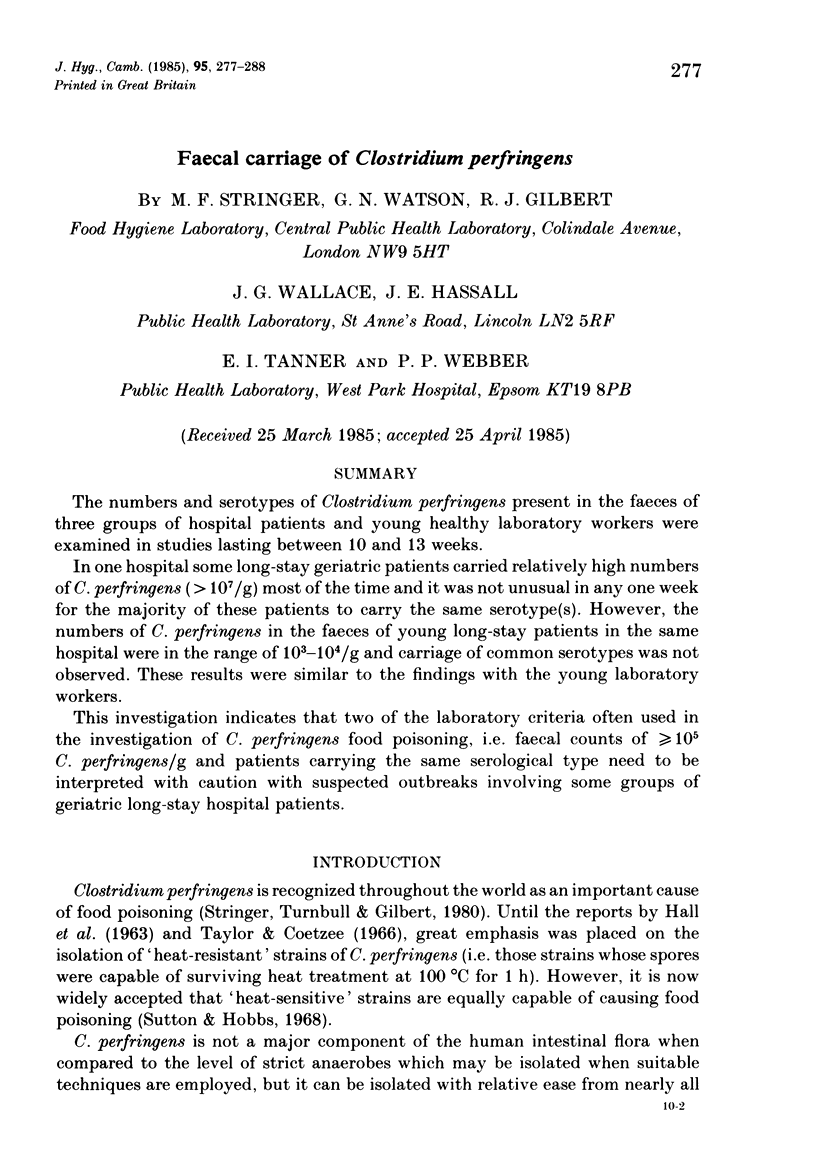
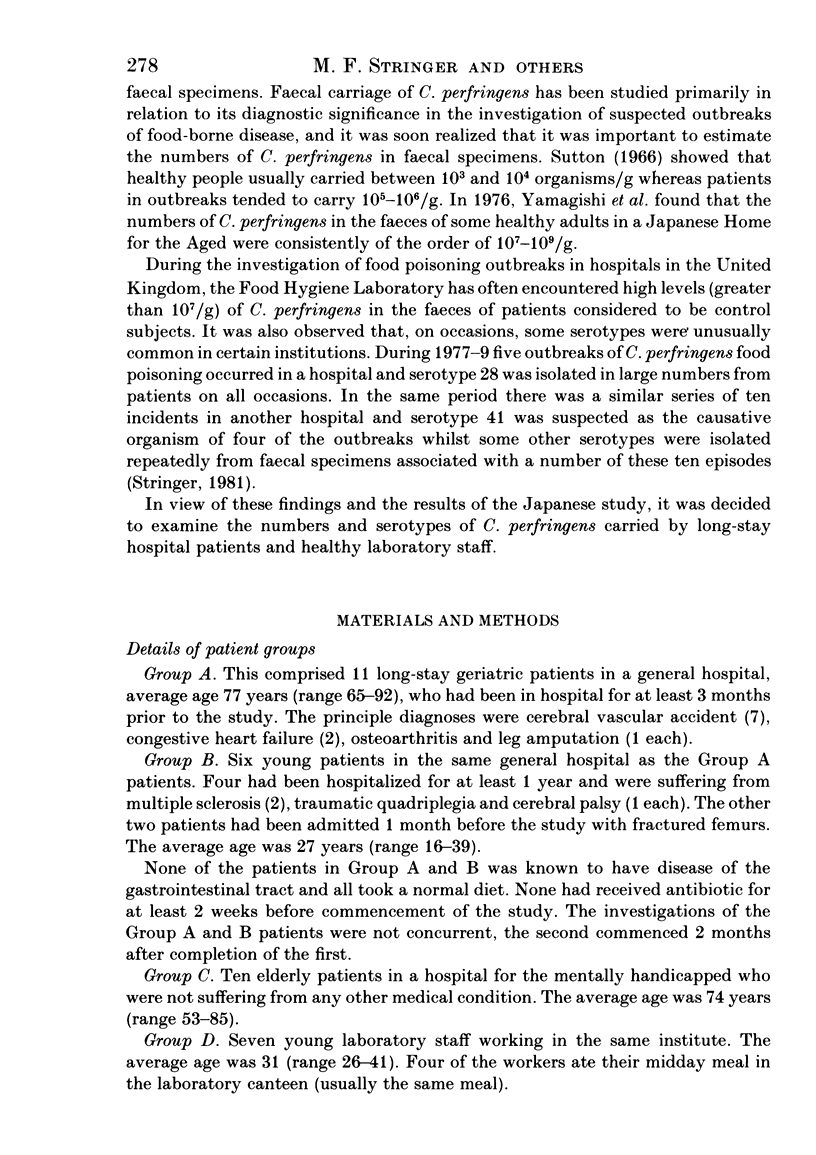
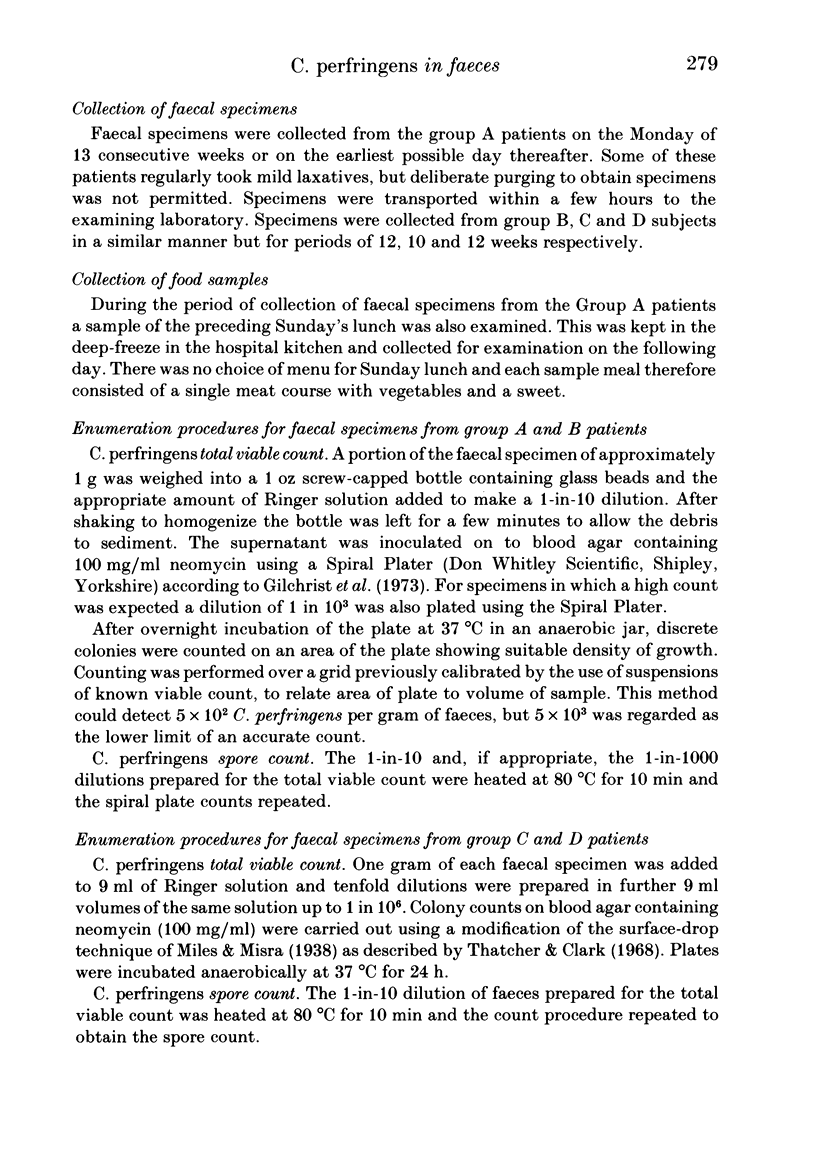

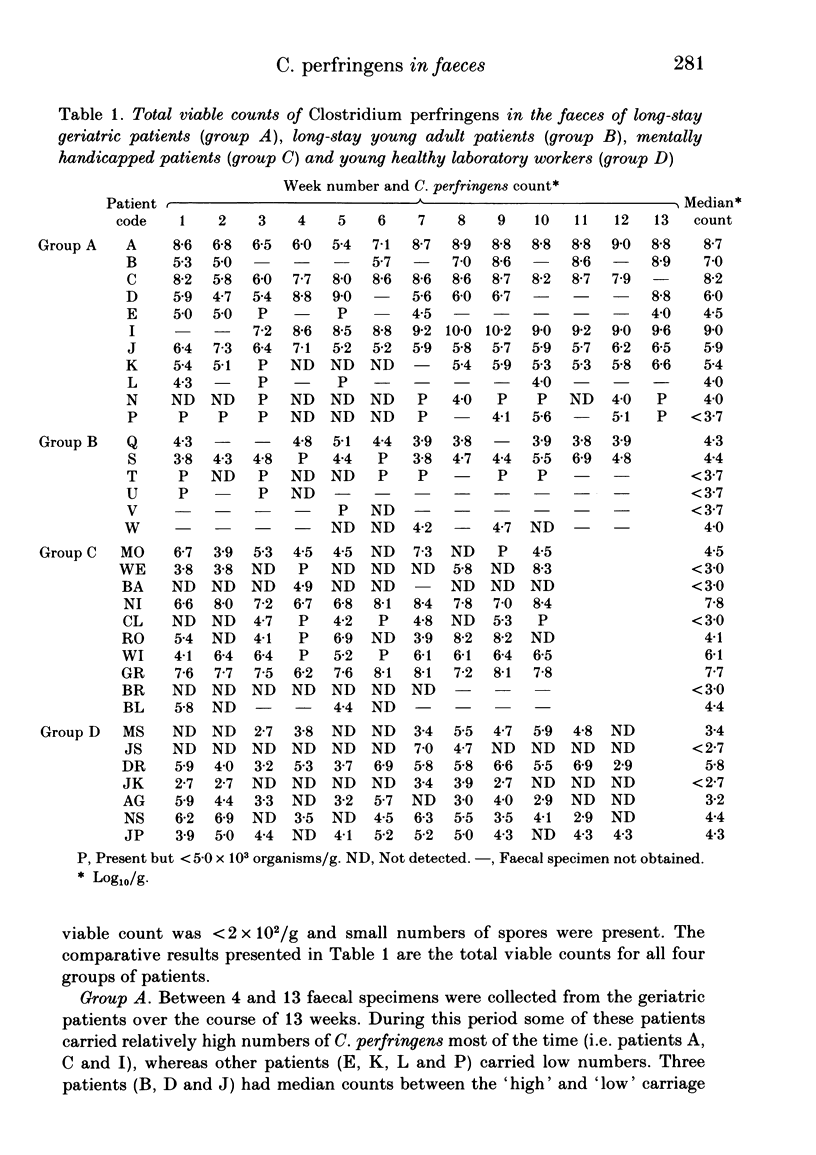

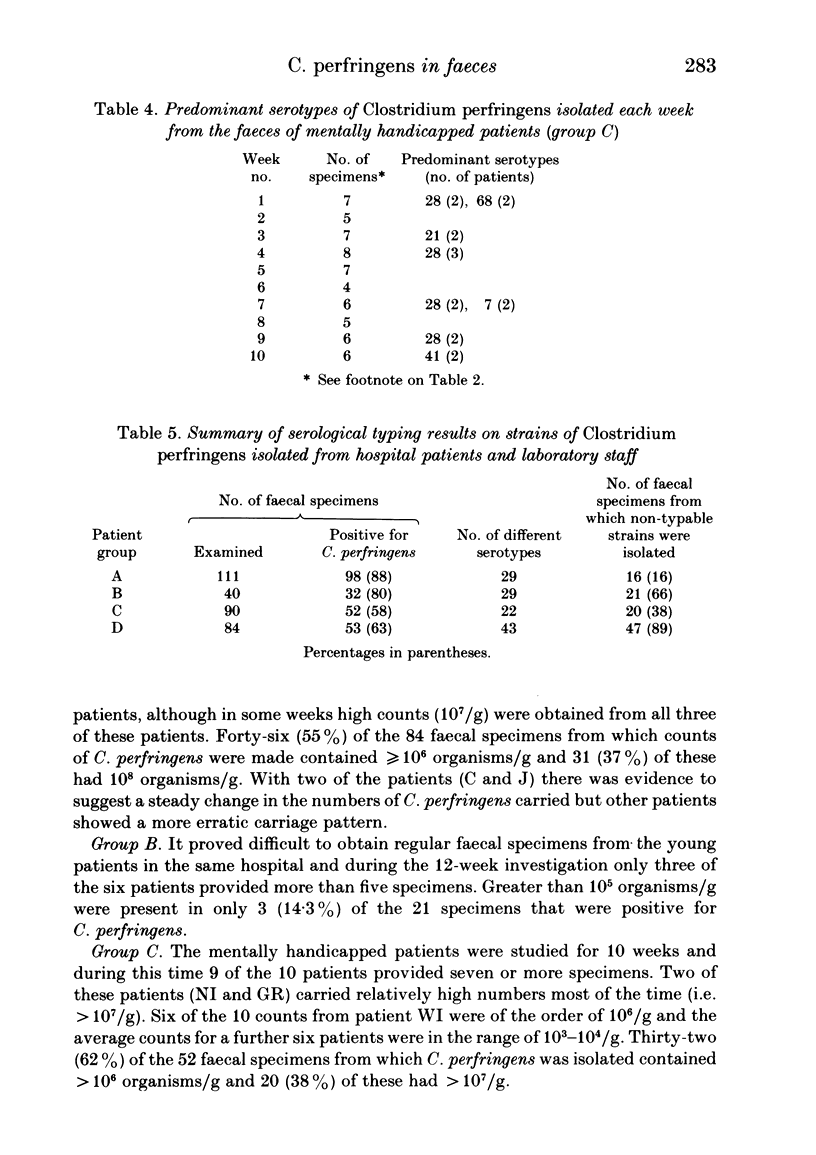
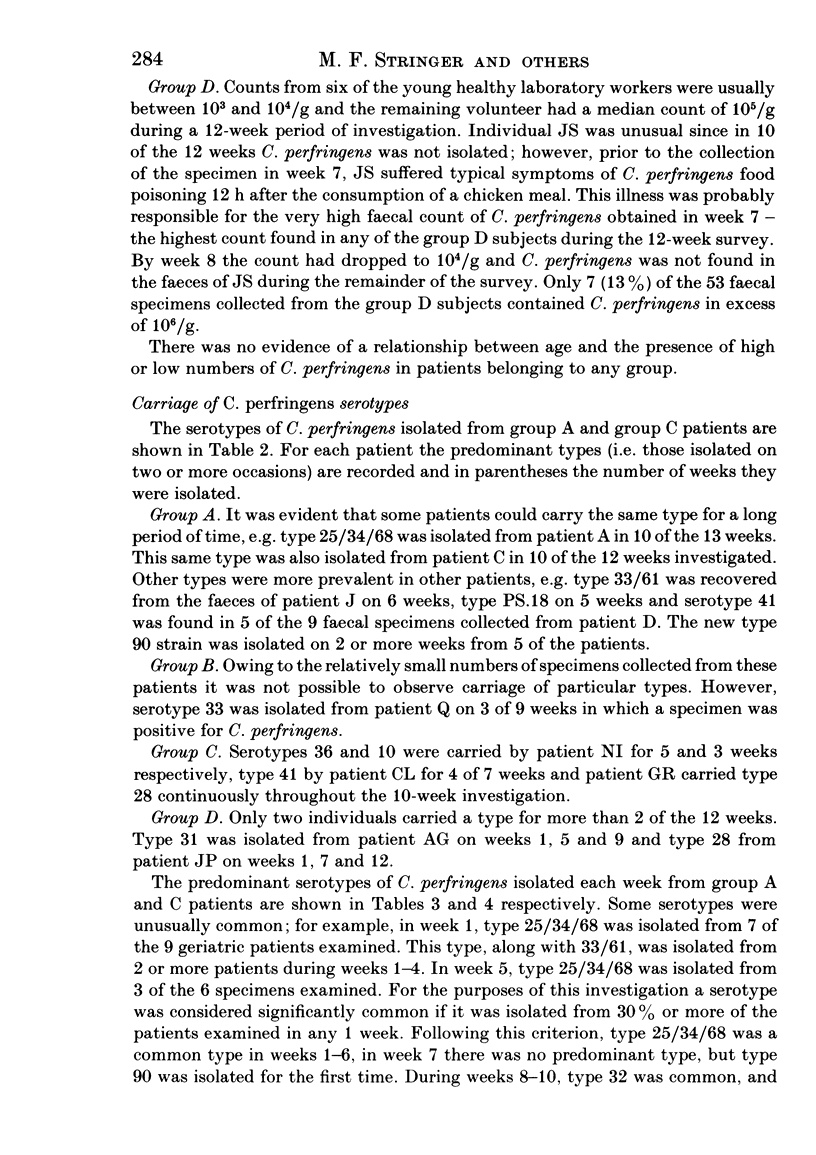
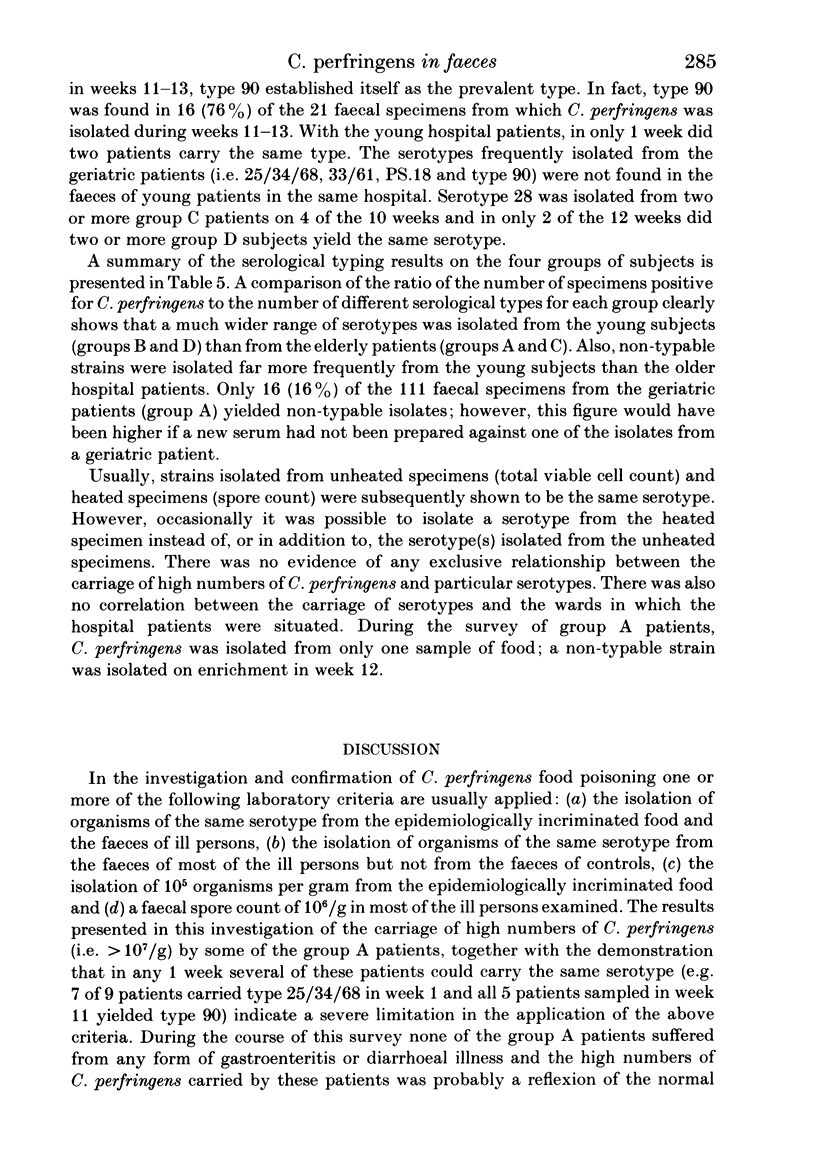
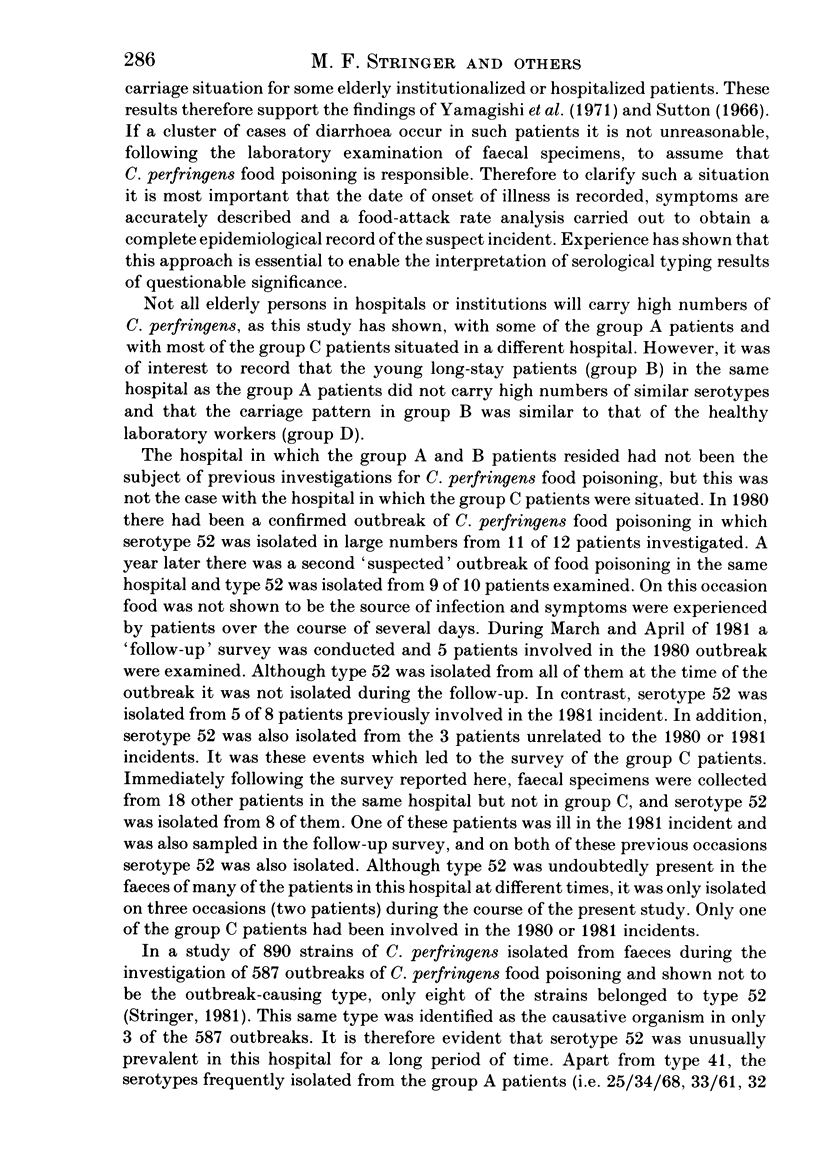
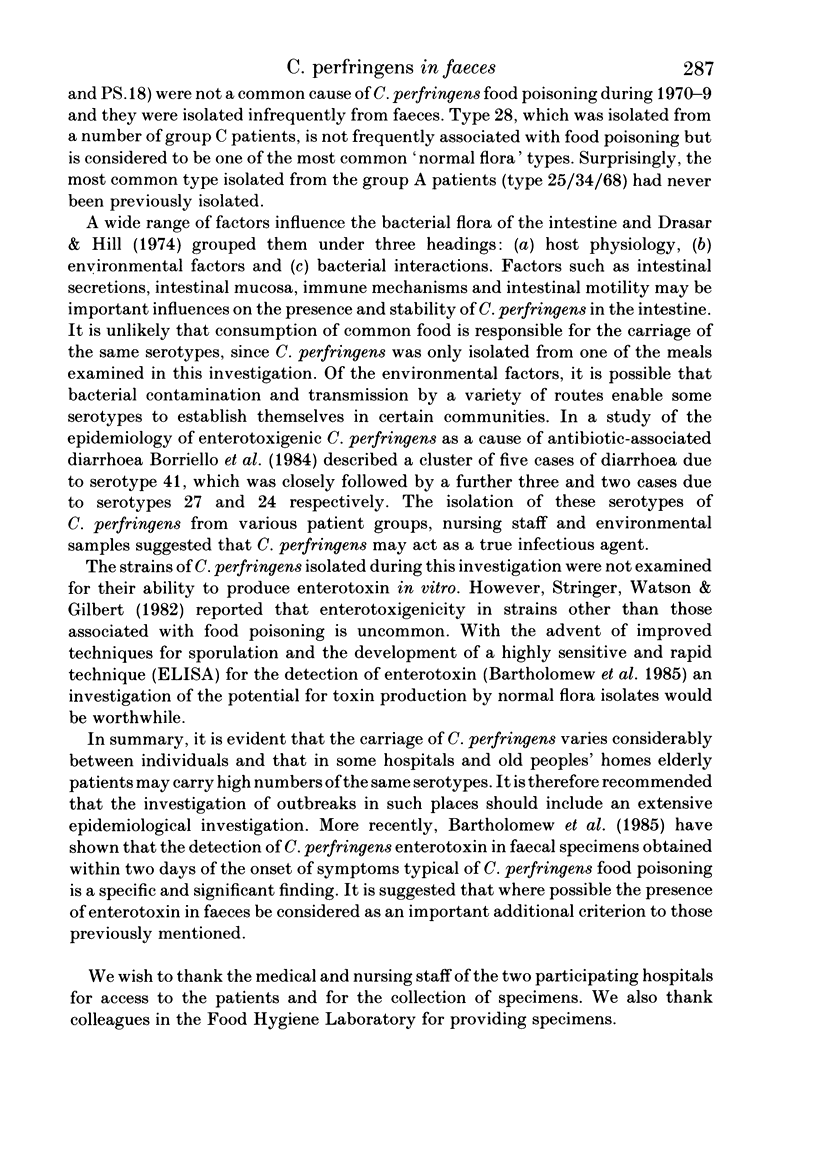

Selected References
These references are in PubMed. This may not be the complete list of references from this article.
- Bartholomew B. A., Stringer M. F., Watson G. N., Gilbert R. J. Development and application of an enzyme linked immunosorbent assay for Clostridium perfringens type A enterotoxin. J Clin Pathol. 1985 Feb;38(2):222–228. doi: 10.1136/jcp.38.2.222. [DOI] [PMC free article] [PubMed] [Google Scholar]
- Gilchrist J. E., Campbell J. E., Donnelly C. B., Peeler J. T., Delaney J. M. Spiral plate method for bacterial determination. Appl Microbiol. 1973 Feb;25(2):244–252. doi: 10.1128/am.25.2.244-252.1973. [DOI] [PMC free article] [PubMed] [Google Scholar]
- HALL H. E., ANGELOTTI R., LEWIS K. H., FOTER M. J. CHARACTERISTICS OF CLOSTRIDIUM PERFRINGENS STRAINS ASSOCIATED WITH FOOD AND FOOD-BORNE DISEASE. J Bacteriol. 1963 May;85:1094–1103. doi: 10.1128/jb.85.5.1094-1103.1963. [DOI] [PMC free article] [PubMed] [Google Scholar]
- Hauschild A. H., Hilsheimer R. Evaluation and modifications of media for enumeration of Clostridium perfringens. Appl Microbiol. 1974 Jan;27(1):78–82. doi: 10.1128/am.27.1.78-82.1974. [DOI] [PMC free article] [PubMed] [Google Scholar]
- Hughes J. A., Turnbull P. C., Stringer M. F. A serotyping system for Clostridium welchii (C. perfringens) type A, and studies on the type-specific antigens. J Med Microbiol. 1976 Nov;9(4):475–485. doi: 10.1099/00222615-9-4-475. [DOI] [PubMed] [Google Scholar]
- McClung L. S., Toabe R. The Egg Yolk Plate Reaction for the Presumptive Diagnosis of Clostridium sporogenes and Certain Species of the Gangrene and Botulinum Groups. J Bacteriol. 1947 Feb;53(2):139–147. doi: 10.1128/jb.53.2.139-147.1947. [DOI] [PMC free article] [PubMed] [Google Scholar]
- Stringer M. F., Turnbull P. C., Gilbert R. J. Application of serological typing to the investigation of outbreaks of Clostridium perfringens food poisoning, 1970-1978. J Hyg (Lond) 1980 Jun;84(3):443–456. doi: 10.1017/s002217240002698x. [DOI] [PMC free article] [PubMed] [Google Scholar]
- Sutton R. G. Enumeration of Clostridium welchii in the faeces of varying sections of the human population. J Hyg (Lond) 1966 Sep;64(3):367–374. doi: 10.1017/s0022172400040651. [DOI] [PMC free article] [PubMed] [Google Scholar]
- Sutton R. G., Hobbs B. C. Food poisoning caused by heat-sensitive Clostridium welchii. A report of five recent outbreaks. J Hyg (Lond) 1968 Mar;66(1):135–146. doi: 10.1017/s0022172400041000. [DOI] [PMC free article] [PubMed] [Google Scholar]
- Taylor C. E., Coetzee E. F. Range of heat resistance of Clostridium welchii associated with suspected food poisoning. Mon Bull Minist Health Public Health Lab Serv. 1966 Jun;25:142–144. [PubMed] [Google Scholar]
- WILLIS A. T., HOBBS G. Some new media for the isolation and identification of Clostridia. J Pathol Bacteriol. 1959 Apr;77(2):511–521. doi: 10.1002/path.1700770223. [DOI] [PubMed] [Google Scholar]
- Yamagishi T., Serikawa T., Morita R., Nakamura S., Nishida S. Persistent high numbers of Clostridium perfringens in the intestines of Japanese aged adults. Jpn J Microbiol. 1976 Oct;20(5):397–403. doi: 10.1111/j.1348-0421.1976.tb01005.x. [DOI] [PubMed] [Google Scholar]


